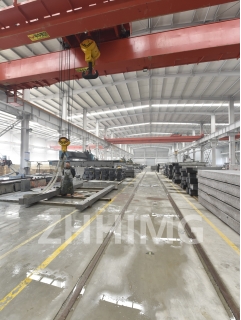Wafer processing equipment is used to manufacture microelectronics and semiconductor devices. This type of equipment contains several components, including granite components. Granite is a versatile material that has been used in the production of semiconductor processing equipment due to its mechanical stability, chemical resistance, and dimensional stability. This article will discuss the advantages and disadvantages of using granite components in wafer processing equipment.
Advantages:
1. Mechanical stability: Granite components are very stable, especially at high temperatures. This makes them ideal for use in wafer processing equipment, which operates at high temperatures. Granite components can withstand heavy loads, vibrations, and thermal shocks without deformation, which ensures high precision and accuracy.
2. Chemical resistance: Granite is resistant to most chemicals commonly used in wafer processing, including acids, bases, and solvents. This enables wafer processing equipment to handle corrosive agents without damaging the equipment components.
3. Dimensional stability: Granite components have high dimensional stability, which means they maintain their shape and size despite environmental changes such as temperature and humidity. This is crucial for wafer processing equipment, which must maintain a high level of accuracy in processing.
4. Low coefficient of thermal expansion: Granite has a low coefficient of thermal expansion, which means it does not expand or contract significantly when exposed to temperature variations. This makes it perfect for wafer processing equipment which is exposed to high temperatures.
5. Long lifespan: Granite is a durable material and can last for many years, even in harsh environments. This reduces the costs of equipment maintenance and replacement, enabling manufacturers to produce high-quality wafers at lower costs.
Disadvantages:
1. High cost: Granite components are more expensive than other materials used in wafer processing equipment, such as steel or aluminum. The high cost of granite components increases the overall cost of wafer processing equipment, making it less accessible for small businesses and startups.
2. Heavy weight: Granite is a dense material, and its components are heavier than other materials used in wafer processing equipment. This makes the equipment bulkier and harder to move.
3. Difficult to repair: Granite components are difficult to repair, and replacement is often the only option when they are damaged. This adds additional costs for maintenance and can prolong equipment downtime.
4. Brittle: Despite the mechanical stability of a granite component, it is susceptible to breaking when subjected to extreme loading or impact. It requires careful handling and treatment to avoid damage that might compromise the precision parts of the equipment.
In conclusion, the advantages of using granite components in wafer processing equipment outweigh the disadvantages. Although there are some drawbacks, the mechanical stability, chemical resistance, and dimensional stability of granite components make it a valuable material for manufacturing high-quality microelectronics and semiconductor devices. By investing in granite components, manufacturers can achieve greater efficiency, accuracy, and longevity in their wafer processing equipment.
Post time: Jan-02-2024

